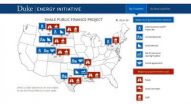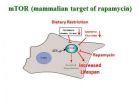(Press-News.org) ST. LOUIS -- A molecular compound developed by Saint Louis University scientists restored learning, memory and appropriate behavior in a mouse model of Alzheimer's disease, according to findings in the May issue of the Journal of Alzheimer's Disease.
The molecule also reduced inflammation in the part of the brain responsible for learning and memory.
The paper, authored by a team of scientists led by Susan Farr, Ph.D., research professor of geriatrics at Saint Louis University, is the second mouse study that supports the potential therapeutic value of an antisense compound in treating Alzheimer's disease in humans.
"It reversed learning and memory deficits and brain inflammation in mice that are genetically engineered to model Alzheimer's disease," Farr said.
"Our current findings suggest that the compound, which is called antisense oligonucleotide (OL-1), is a potential treatment for Alzheimer's disease."
Farr cautioned that the experiment was conducted in a mouse model. Like any drug, before an antisense compound could be tested in human clinical trials, toxicity tests need to be completed.
Antisense is a strand of molecules that bind to messenger RNA, launching a cascade of cellular events that turns off a certain gene.
In this case, OL-1 blocks the translation of RNA, which triggers a process that keeps excess amyloid beta protein from being produced. The specific antisense significantly decreased the overexpression of a substance called amyloid beta protein precursor, which normalized the amount of amyloid beta protein in the body. Excess amyloid beta protein is believed to be partially responsible for the formation of plaque in the brain of patients who have Alzheimer's disease.
Scientists tested OL-1 in a type of mouse that overexpresses a mutant form of the human amyloid beta precursor gene. Previously they had tested the substance in a mouse model that has a natural mutation causing it to overproduce mouse amyloid beta. Like people who have Alzheimer's disease, both types of mice have age-related impairments in learning and memory, elevated levels of amyloid beta protein that stay in the brain and increased inflammation and oxidative damage to the hippocampus – the part of the brain responsible for learning and memory.
"To be effective in humans, OL-1 would need to be effective at suppressing production of human amyloid beta protein," Farr said.
Scientists compared the mice that were genetically engineered to overproduce human amyloid beta protein with a wild strain, which served as the control. All of the wild strain received random antisense, while about half of the genetically engineered mice received random antisense and half received OL-1.
The mice were given a series of tests designed to measure memory, learning and appropriate behavior, such as going through a maze, exploring an unfamiliar location and recognizing an object.
Scientists found that learning and memory improved in the genetically engineered mice that received OL-1 compared to the genetically engineered mice that received random antisense. Learning and memory were the same among genetically engineered mice that received OL-1 and wild mice that received random antisense.
They also tested the effect of administering the drug through the central nervous system, so it crossed the blood brain barrier to enter the brain directly, and of giving it through a vein in the tail, so it circulated through the bloodstream in the body.
They found where the drug was injected had little effect on learning and memory.
"Our findings reinforced the importance of amyloid beta protein in the Alzheimer's disease process. They suggest that an antisense that targets the precursor to amyloid beta protein is a potential therapy to explore to reversing symptoms of Alzheimer's disease," Farr said.
INFORMATION:
The citation for the article is: Central and Peripheral Administration of Antisense Oligonucleotide Targeting Amyloid-β Protein Precursor Improves Learning and Memory and Reduces Neuroinflammatory Cytokines in Tg2576 (AβPPswe) Mice, Susan A. Farr, Michelle A. Erickson, Michael L. Niehoff, William A. Banks, John E. Morley. Journal of Alzheimer's Disease 40(4). DOI: 10.3233/JAD-131883
Established in 1836, Saint Louis University School of Medicine has the distinction of awarding the first medical degree west of the Mississippi River. The school educates physicians and biomedical scientists, conducts medical research, and provides health care on a local, national and international level. Research at the school seeks new cures and treatments in five key areas: infectious disease, liver disease, cancer, heart/lung disease, and aging and brain disorders. END
Compound reverses symptoms of Alzheimer's disease in mice, SLU research shows
Findings published in the May Journal of Alzheimer's Disease
2014-05-21
ELSE PRESS RELEASES FROM THIS DATE:
Vitamin E in canola and other oils hurts lungs
2014-05-20
CHICAGO --- A large new Northwestern Medicine® study upends our understanding of vitamin E and ties the increasing consumption of supposedly healthy vitamin E-rich oils -- canola, soybean and corn – to the rising incidence of lung inflammation and, possibly, asthma.
The new study shows drastically different health effects of vitamin E depending on its form. The form of Vitamin E called gamma-tocopherol in the ubiquitous soybean, corn and canola oils is associated with decreased lung function in humans, the study reports. The other form of Vitamin E, alpha-tocopherol, ...
Researchers test whether Red Queen hypothesis makes species resilient
2014-05-20
In Lewis Carroll's 1871 classic novel Through the Looking Glass, the Red Queen tells Alice: "Now, here, you see, it takes all the running you can do, to keep in the same place."
Over the years, evolutionary biologists have used the Red Queen's statement to refer to the "Red Queen" hypothesis, which describes how living organisms, including humans, manage to survive in a changing environment by adapting through sexual reproduction. According to a University of Iowa researcher, the hypothesis is supported.
In a paper published in the journal Biology Letters, lead author ...
Shale development generally helps local government coffers
2014-05-20
Oil and gas development from shale fields has generally helped the public finances of local communities, providing new revenues and resources that usually -- but not always -- outweigh the increased demand for public services and other costs, according to a new analysis from two Duke University researchers.
Daniel Raimi and Richard Newell gathered data from communities surrounding 10 oil and gas "plays" from September 2013 through February 2014, traveling to Arkansas, Colorado, Louisiana, Montana, North Dakota, Pennsylvania, Texas and Wyoming to interview local officials ...
'Supermodel' mouse reveals mechanisms that regulate metabolism, researchers find
2014-05-20
DALLAS – May 20, 2014 – A lean "Supermodel" mouse type has revealed the potentially critical role played by a largely unknown gene that regulates metabolism, findings that could provide new insight into diseases ranging from diabetes to obesity, a new study by UT Southwestern Medical Center researchers suggests.
The Supermodel mouse's phenotype – the physical characteristics that result from its gene makeup – include being very small in size, with an unusual body form caused by abnormal distribution of fat, said Dr. Zhe Chen, Assistant Professor of Biophysics, and ...
Research explains action of drug that may slow aging and related disease
2014-05-20
CORVALLIS, Ore. – A proven approach to slow the aging process is dietary restriction, but new research in the Linus Pauling Institute at Oregon State University helps explain the action of a drug that appears to mimic that process – rapamycin.
Rapamycin, an antibiotic and immunosuppressant approved for use about 15 years ago, has drawn extensive interest for its apparent ability – at least in laboratory animal tests – to emulate the ability of dietary restriction in helping animals to live both longer and healthier.
However, this medication has some drawbacks, including ...
Shrub growth decreases as winter temperatures fluctuate up
2014-05-20
Many have assumed that warmer winters as a result of climate change would increase the growth of trees and shrubs because the growing season would be longer. But shrubs achieve less yearly growth when cold winter temperatures are interrupted by temperatures warm enough to trigger growth.
"When winter temperatures fluctuate between being cold and warm enough for growth, plants deplete their resources trying to photosynthesize and end the winter with fewer reserves than they initially had. In the summer they have to play catch up," said Melanie Harsch, a University of Washington ...
Game changer: Patients of doctors who played online game had better control of blood pressure
2014-05-20
Boston, MA – Primary care providers who engaged in an online game to solve clinical cases about hypertension management improved blood pressure control of their patients in a shorter amount of time compared to non-gamers, according to a new study by researchers at Brigham and Women's Hospital (BWH) and the Veterans Affairs Boston Healthcare System.
The study was published May 20, 2014 in Circulation: Cardiovascular Quality and Outcomes.
"This study is the first to show that an online educational game among medical professionals can improve the health measures of their ...
Screen of existing drugs finds compounds active against MERS coronavirus
2014-05-20
WHAT:
Clinicians treating patients suffering from Middle East respiratory syndrome (MERS) currently have no drugs specifically targeted to the MERS coronavirus (MERS-CoV), a virus first detected in humans in 2012 that has since caused 614 laboratory-confirmed infections, including 181 that were fatal, according to the World Health Organization. The case count escalated sharply in the spring of this year, and the first cases in the United States were announced in early May. To address the urgent need for therapies, researchers supported by the National Institutes of Health ...
Detroit Lions help rebuild city with innovative gridiron giving, U-M researchers say
2014-05-20
ANN ARBOR—The Detroit Lions' new model of philanthropy and community engagement may prove to be a touchdown for the city of Detroit.
A new case study of corporate social responsibility in sport by University of Michigan researchers uses the Lions as an exemplar of a professional sports team reinventing its charitable giving and community relations approach in hopes of making a bigger impact on the community.
In 2012, the Lions created the "Living in the City" campaign—a new model of corporate philanthropy that emphasizes deeper relationships with a small core group ...
UofL researcher and team explore broader definition of successful aging
2014-05-20
LOUISVILLE, Ky. – An aging population poses challenges for governments around the globe as nations grapple with how to satisfy the physical, social and economic needs of older adults. About 126 million adults 65 years and older live in China - the country with the largest population of senior citizens, while 40 million adults 65 years and older live in the United States.
In an article published today in Journal of Transcultural Nursing, University of Louisville School of Nursing assistant professor Valerie Lander McCarthy, PhD, RN; Ji Hong, MSN, a visiting scholar from ...
LAST 30 PRESS RELEASES:
Strategic river sensors could have forewarned of Texas Camp flood disaster
Drone sampling of whale breath reveals first evidence of potentially deadly virus in Arctic
Roman soldiers defending Hadrian’s Wall infected by parasites, study finds
Pinochet’s prisoners were tormented with music but still found solace in it, a new book reveals
Fertility remains high in rural Tanzania despite access to family planning
AI-assisted device can improve autism care access
Kinetic careers
Uncovering how parasitic plants avoid attacking themselves to improve crop resistance
Nanoparticle vaccine strategy could protect against Ebola and other deadly filoviruses
Study finds brain care score can predict risk of stroke across racial groups
Key lung immune cells can intensify allergic reactions
Do hormones explain why women experience more gut pain?
New materials conduct ions in solids as easily as in liquids
Breakthrough of the Year: Renewable energy begins to eclipse fossil fuel-based sources
LLM use is reshaping scientific enterprise by increasing output, reducing quality and more
Introducing LightGen, a chip for ultra-fast, ultra-efficient generative AI
Astronomers see fireworks from violent collisions around nearby star
ACC/AHA issue new guideline on managing congenital heart disease in adults
Cosmic crash caught on camera
Is talented youth nurtured the wrong way? New study shows: top performers develop differently than assumed
Ants: An untapped resource in the development of antibiotics?
Archaeologists use AI to create prehistoric video game
Mitochondria migrate toward the cell membrane in response to high glucose levels
Tiny viral switch offers hope against drug-resistant bacteria
Most parents aware of early peanut introduction guidelines, but confused about details
HPV vaccine can protect against severe lesions of the vulva and vagina
Virtual care provision and emergency department use among children and youth
Quadrivalent HPV vaccine and high-grade vulvovaginal lesions
Insights into dry eyes gained from stem cell-derived tear glands
Researchers identify 166 human pluripotent stem cell lines available for use in clinical applications
[Press-News.org] Compound reverses symptoms of Alzheimer's disease in mice, SLU research showsFindings published in the May Journal of Alzheimer's Disease






